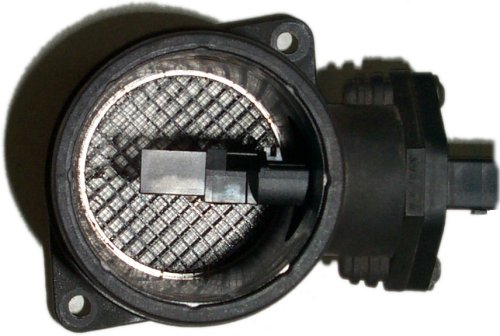Declining importance

Just as the combustion engine will probability forfeit its importance in the long run, but will never completely lose it due to the existence of many and very expensive vintage cars, there is a component in the gasoline engine
that has already suffered the same fate.
No, it's not the carburetor, because it has completely lost out, and in a record-breakingly short time. No, the removal of the carburetor marked the beginning of the rise of the air meter, although initially it was in the form of a
rather bulky air flow meter.
Cars with fuel injection had replaced carburetor engines, initially for environmental reasons, but also to save fuel. Automotive technology fell under the spell of electronics, very soon also in digital form. People no longer
wanted to calibrate roughly.
No, from now on there was input, processing and output, and since the air mass meter, the former was also completely non-mechanical. Nothing could wear out anymore, only the hot wire that was still used at the
beginning still needed a so-called free-burning temperature.
Everything seemed to be in order when this inconvenience was overcome by measuring in the bypass. Only in engines with large turbulences in the intake tract did it then still need to be measured at the inlet of the bypass.
This ensured that the same air masses were not measured twice. Everything could have been so good for the air mass meter if the laws on emissions had not been tightened further, similar to today.
The gasoline engine has to give way for the most part because the electric motor solves the problems much better. And that's exactly what happened to the air mass meter. Just as the electric motor emerged from proven
areas of electrical engineering, the catalyst emerged from chemistry.
At first, there was no danger to the air mass meter because the catalyst was simply integrated into the exhaust system. Until it was discovered that it works much better when the engine is supplied with a precisely
proportioned ratio of air to fuel.
The lambda sensor was invented, which not only delivers the smallest deviation in the form of changing voltage to the control unit, but is also located at the output. This means that it also carefully registers any disturbance in
the combustion.
Yes, the control unit, which is also responsible for the injection time, cannot do anything with two sensors that offer the same thing; it can only rely on one. And why was the air mass meter allowed to stay in its post anyway?
Because the lambda sensor only works at temperatures above 300°C and the catalytic converter at temperatures above 450°C. The control unit would then have no input data with which to determine the injection quantity.
And when accelerating, the mixture would initially become leaner due to the larger amount of air.
Of course, that can't be the purpose of an injection system. The air mass meter is a better advisor in these few areas. But that's about it. It can therefore be considered downgraded.
But there are people, especially in the automotive sector, who still think he is the boss out of habit. Just like one can't get used to the fact that the combustion engine will definitely lose importance, that's only a matter of time.
|